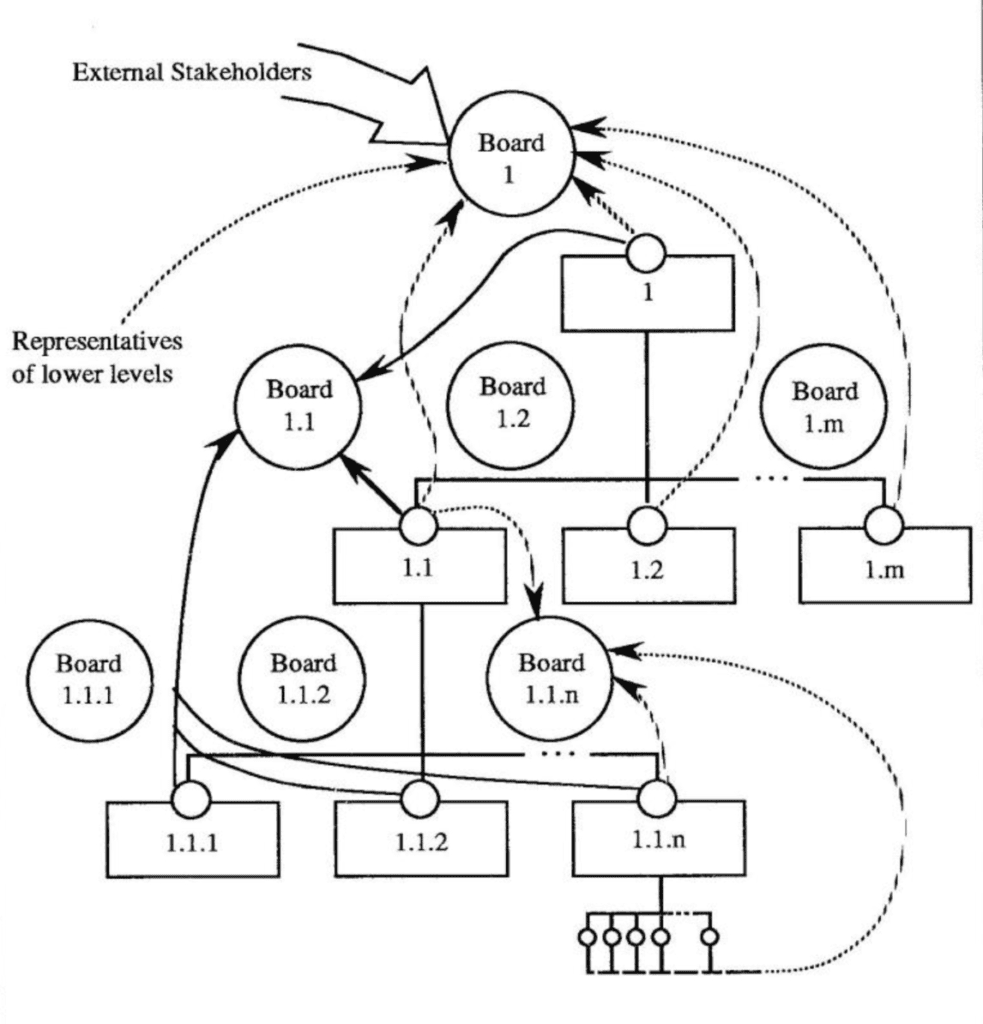This post is about Strategy Deployment and the book Team of Teams: New Rules of Engagement for a Complex World by General Stanley McChrystal, with David Silverman, Tantum Collins, and Chris Fussell. It’s another great book which has nothing to do with Lean or Agile explicitly. However, it contains some great, relevant stories and lessons from the post-9/11 war in Afghanistan and the Middle East.
It is another post comparing my views on Strategy Deployment and other approaches. This is because there are a couple of key points that jumped out at me in relation to Strategy Deployment. First, the description of what a Team of Teams actually is. Second, the description of the overall approach as an example of Strategy Deployment.
What is a Team of Teams?
The following diagram sums up the way the book defines a Team of Teams, compared to how I think many people think of it. This includes me before I read it!

In other words:
on a team of teams, every individual does not have to have an relationship with every other individual; instead the relationships between the constituent teams need to resemble those between individuals on a given team.
Team of Teams p128
The important element for me is the differentiation between a Team of Teams and a Command of Teams. I often see scaled agile structures (such as the SAFe Agile Release Train) referred to as a Team of Teams. In most cases, I would say they are actually a Command of Teams. Similarly, a Strategy Deployment structure can often be more of a Command of Teams. In hindsight, the visualisation I used in a previous post on the Dynamics of Strategy Deployment is guilty of this.
I recently came across a post on Creating Learning Organisations which included a picture of what Russell Ackoff called a Circular Organisation. While not exactly the same as what is described in Team of Teams, I think it is a closer representation of a possible way of creating that dynamic.
McChrystal describes that dynamic by saying “we didn’t need every member of the Task Force to know everyone else; we just needed everyone to know someone on every team.”

How does this relate to Strategy Deployment?
Team of Teams introduces the concepts of empowered execution and shared consciousness. Shared consciousness is defined as a “state of emergent, adaptive organisational intelligence”. Empowered execution is described as when “officers, instead of handing the decision to me and providing guidance, were now entrusted with the responsibility of a decision”. The two go hand in hand as shown in the following diagram.

In other words:
The speed and interdependence of the modern environment create complexity. Coupling shared consiousness and empowered execution creates an adaptable organisation able to react to complex problems.
Team of Teams p245
This strikes me as very similar to the Alignment and Autonomy model described by Stephen Bungay. Autonomy is equivalent to Empowered Execution, and Alignment is equivalent to Shared Consciousness.
From this, we can use my definition of Strategy Deployment as “any form of organisational improvement in which solutions emerge from the people closest to the problem”. Empowered execution is what enables the solutions to emerge from the people closest to the problem. Shared consciousness is what creates a common understanding of what those problems are and their organisational context.
Team of Teams is another book which I’ll be adding to my list of top recommendations for people wanting to learn more about Strategy Deployment. I really need to publish that list somewhere!

[…] Strategy Deployment and Team of Teams (Karl Scotland) […]